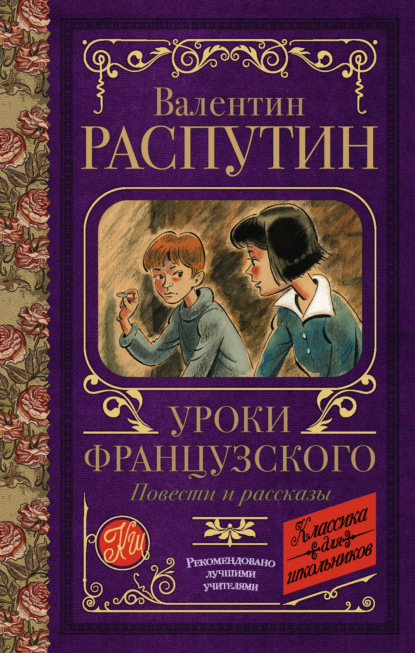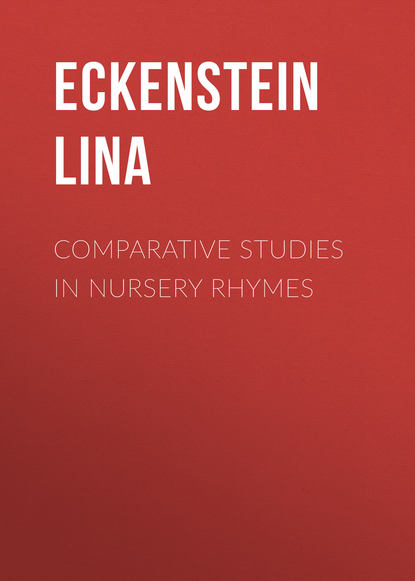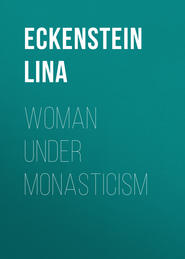По всем вопросам обращайтесь на: info@litportal.ru
(©) 2003-2024.
✖
Comparative Studies in Nursery Rhymes
Настройки чтения
Размер шрифта
Высота строк
Поля
The Latin version of the Chant of the Creed has been traced back to the second half of the sixteenth century. Its words were set to music in a motet for thirteen voices by Theodor Clinius (d. 1602), a Venetian by birth (E., p. 408). Another Latin version of the chant goes back to 1650. The chant begins: —
Dic mihi quid unus?
– Unus est Jesus Christus [or Deus] qui regnat in aeternum [or coelis]. (A., I, 420.)
"Tell me, what is One? One is Jesus Christ [or God] who reigns in eternity [or in heaven]."
The answers further explain two as the testaments, three as the patriarchs, four as the evangelists, five as the books of Moses, six as the water-jugs of Cana in Galilee, seven as the gifts of the spirit (or the candelabra lit before God), eight as the beatitudes, nine as the orders (or choirs of the angels), ten as the commandments, eleven as the disciples (or stars seen by Joseph), twelve as the articles of the faith (or the apostles).
The Chant of the Creed as recited in Spain (A., II, 142) is set in the same form, and explains the numbers in much the same manner, except that six are the days of the Creation, and eleven are eleven thousand virgins. Another version (A., II, 104) associates the Virgin with one, the three Maries with three, while nine, like the Hebrew chant, indicates the months of expectancy of the Virgin. In a Portuguese version also, nine are the months of Christ's becoming, and eleven are eleven thousand virgins (A., II, 102).
Throughout Italy and in Sicily the Chant of the Creed is known as Le dodici parole della Verità, "the twelve words of truth." They are generally put into the lips of the popular saint, Nicolas of Bari, who is said to have defeated the evil intentions of Satan by teaching them. These Italian chants for the most part agree with the Latin chant already cited, except that two in the Abruzzi is associated with the sun and the moon; five is explained as the wounds of Jesus or of St. Francis, and eleven stands for the articles of the Catholic faith (A., I, 419; II, 97).
In Denmark the Chant of the Creed is put into the lips of St. Simeon, and begins: —
Stat op, Sante Simeon, og sig mig, hvad een er?
"Stand forth, St. Simeon, and tell me, what is one."
The explanations in this case are strictly Christian, Jesus Christ standing for One. The souls saved by God from the ark (sjaele frelste Gud udi Arken) stand for eight (Gt., II, 68).
In Languedoc also the chant is current in a Christian adaptation which agrees with the Latin, except that the Trinity stands for three; the wounds of Jesus, as in the Italian chant, stand for five; the lights in the temple stand for six; and the joys of our Lady stand for seven (M. L., p. 478).
From Europe the Chant of the Creed has been carried to Canada, where a version is sung in French to a monotonous tune in four beats at a formal kind of dance, called a ronde religieuse– a religious round. To this dance six couples stand up; each dancer represents a number. To the sound of their singing they move in a chain, each person turning first to the right, then to the left. When number six is reached in singing, and every time that six recurs in the chant, the dancing stops, and to the words "six urnes de vin remplies," the dancers who represent even numbers turn first to the right, then to the left, and make a deep bow, while those that represent uneven numbers perform the same ceremony the other way about (G., p. 298). Then the dancing is resumed. This figure, judging from the description, exactly corresponds to the Grand Chain in Lancers, except that six couples dance instead of four or eight.
In the Canadian chant the explanations of the numbers are all Christian, except that for eleven they say eleven thousand virgins, which agrees with the virgins of the Spanish and Portuguese chants. These eleven thousand virgins are mentioned also in a version of the chant current in Zürich, which, unlike the others, carries the numbers to fifteen. It enumerates Christian matters similar to those already named as far as nine choirs of angels, and further associates ten with thousands of knights, eleven with thousands of virgins, the apostles with twelve, the disciples with thirteen, the helpers in need (Nothelfer) with fourteen, the mysteries with fifteen. This chant is set in the old way of question and answer, and the answers are recited in cumulative form (R., p. 268).
The Chant of the Creed in a late development is preserved in the form of a religious poem among ourselves which is called A New Dyall. Two versions of it are preserved in the MS. Harleian 5937, which dates from about the year 1625. They have been printed by F. S. A. Sandys among his Christmas Carols. The refrain of the one recalls the celebration of Twelve Days: —
In those twelve days, in those twelve days, let us be glad,
For God of His power hath all things made.
In both pieces the dialogue form is dropped, and there is no attempt at cumulation.
One God, one baptism, and one faith,
One truth there is the Scripture saith;
Two Testaments, the old and new,
We do acknowledge to be true;
Three persons are in Trinity,
Which make one God in Unity;
Four sweet evangelists there are
Christ's birth, life, death, which do declare;
Five senses like five kings, maintain
In every man a several reign;
Six days to labour is not wrong,
For God Himself did work so long;
Seven liberal arts has God sent down
With divine skill man's soul to crown;
Eight in Noah's ark alive were found,
When (in a word) the World lay drowned.
Nine Muses (like the heaven's nine spheres)
With sacred tunes entice our ears;
Ten statutes God to Moses gave
Which, kept or broke, do spoil or save;
Eleven with Christ in heaven do dwell,
The twelfth for ever burns in hell;
Twelve are attending on God's Son;
Twelve make our Creed, "the dyall's done."[56 - Sandys, F. S. A.: Christmas Carols, p. 59 ff.]
The objects named in this poem agree in most cases with those of the Latin chant, but six, there associated with the water-jugs in Cana of Galilee, is here associated with the days of the Creation, which correspond with the six days of the Creation of the Spanish Chant of the Creed, and with the six working days of the week of a heathen dialogue story to which we shall return later. The number eight is here associated with the persons saved in the ark of Noah, as in the Chant of the Creed which is current in Denmark.
CHAPTER XIV
HEATHEN CHANTS OF THE CREED
WE now turn to those versions of the Chant of the Creed which are heathen in character. Again we have versions before us in the vernacular of Brittany, Spain, Scotland, and several set in the form of songs that are current in different parts of England.
The most meaningful and elaborate versions of the chant come from Brittany. One is called Les vêpres des grenouilles. It is set in the form of instruction, and begins: —
Can caer, Killoré. Iolic, petra faot dide?
Caera traïc a gement orizoud ti.
(L., I, p. 95.)
"Chant well, Killore. Iolic, what shall I sing? – The most beautiful thing thou knowest."
And it enumerates, "One silver ring to Mary, two silver rings, three queens in a palace, four acolytes, five black cows, six brothers and six sisters, seven days and seven moons, eight beaters of the air, nine armed sons, ten ships on the shore, eleven sows, twelve small swords." This combination of objects with numbers from one to twelve agrees most closely with the enumeration of the game of Twelve Days.
The longer version of the Breton chant was interpreted by its editor as a chant of instruction, and he claimed for it a Druidical origin. It begins: —
Beautiful child of the Druid, answer me right well.
– What would'st thou that I should sing? —
Sing to me the series of number one, that I may learn it this very day.
– There is no series for one, for One is Necessity alone, the father of death, there is nothing before and nothing after.
And we read of two as oxen yoked to a cart; of three as the beginning, the middle, and the end of the world for man and for the oak; also of the three kingdoms of Merlin; of four as the stones of Merlin for sharpening the swords of the brave; of five as the terrestrial zones, the divisions of time, the rocks on one sister (sic); of six as babes of wax quickened into life through the power of the moon; of seven as the suns, the moons, and the planets, including La Poule (i.e. the constellation) of Charles's Wain; of eight as the winds that blow, eight fires with the great fire lighted in the month of May on the War Mountain; of nine as little white hands near the tower of Lezarmeur, and as maidens who groan; of nine also as maidens who dance with flowers in their hair and in white robes around the well by the light of the moon; 'the wild sow and her young at the entrance to their lair, are snorting and snarling, snarling and snorting; little one, little one, hurry to the apple-tree, the wild boar will instruct you'; of ten as the enemy's boats on the way from Nantes, 'woe to you, woe to you, men of Vannes'; of eleven as priests 'coming from Vannes with broken swords and blood-stained garments, and crutches of hazel-wood, of three hundred only these eleven ones are left'; of twelve as months and signs, 'Sagittarius, the one before the last, lets fly his pointed arrow. The twelve signs are at war. The black cow with a white star on her forehead rushes from the forest (des despouillés) pierced by a pointed arrow, her blood flows, she bellows with raised head. The trumpet sounds, fire and thunder, rain and wind. No more, no more, there is no further series.' (H. V., p. 1.)
The contents of this chant in several particulars agree with the shorter one. Seven stands for days, eight for winds, and ten for boats.
A similar chant comes from Spain, which gives the answers with a curious variation. For in this case most of the numbers are explained as one less of one kind and one more of another. Thus one stands for the Wheel of Fortune; two for one clock and bell; three for the handle of a mortar (? la mano del almiles); four for three basins and one dish; five for three jars of red wine and two of white (or for the wounds of St. Francis); six for the loves you hold (amores que teneis); seven for six cassocks and a cape; eight for seven butchers and one sheep; nine for eight hounds and one hare; ten for the toes; eleven for ten horsemen and one leader (breva,? acorn); twelve are probably pigs.
Exactly as in the other chants the numbers are set in question and answer, the answer being in cumulative form: —
Quién me dirá que no es una? —
La rued de la fortuna.
(Ma., p. 68.)
"Who will tell me what is one? – One is the Wheel of Fortune," and so forth.






